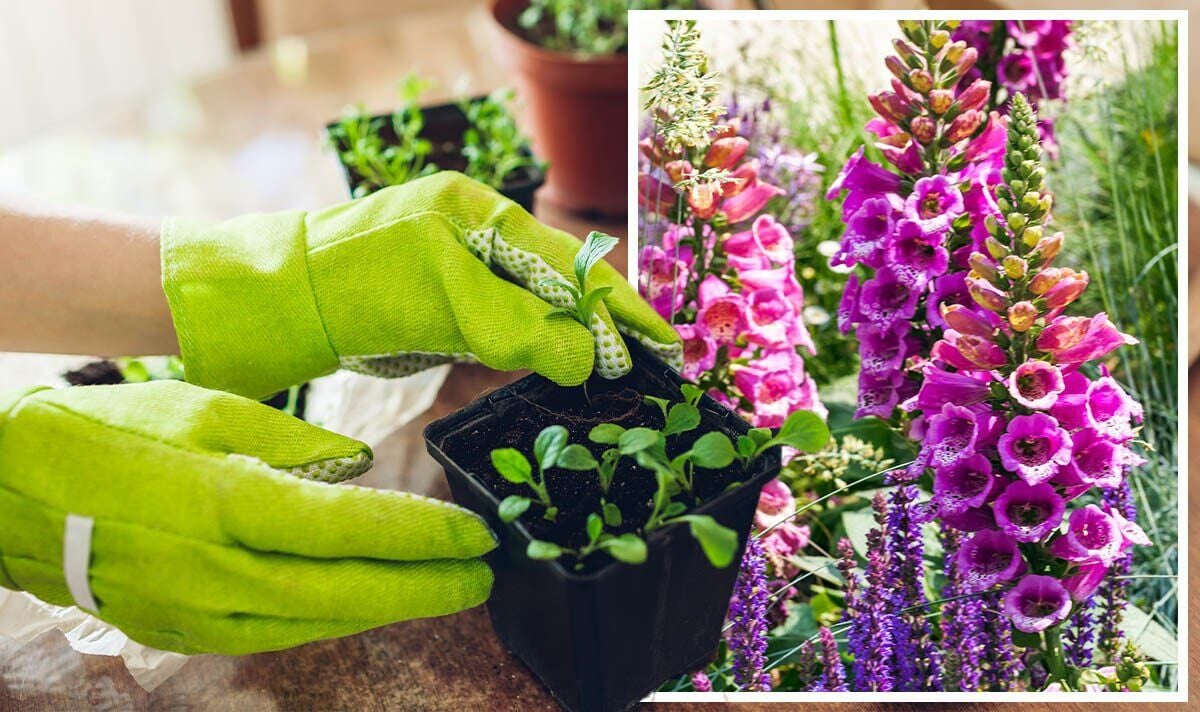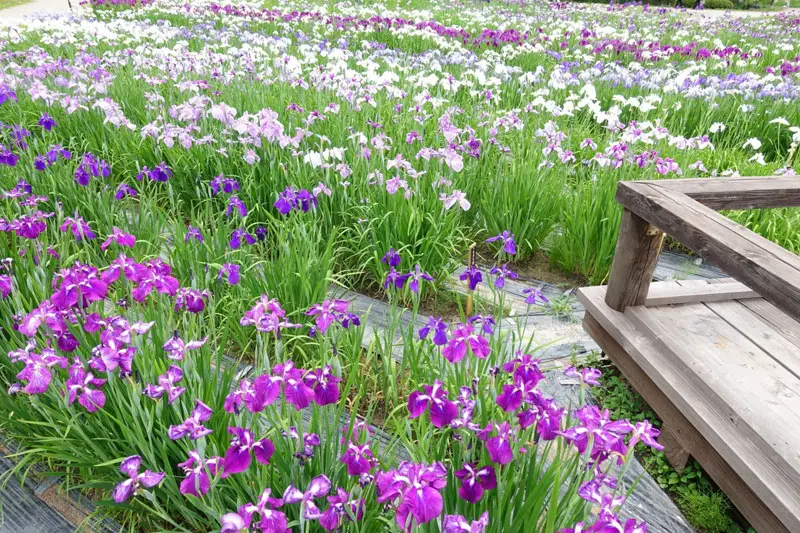Learn How and When To Prune Mahonia
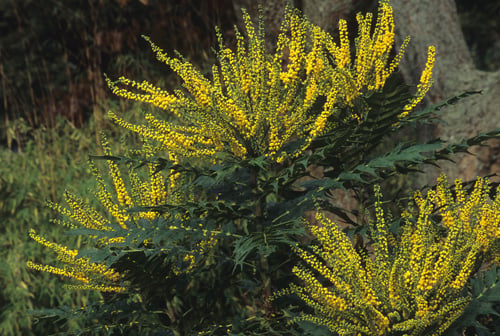
Table of Contents
Mahonia is a vibrant shrub with beautiful flowers that bloom during winter. Gardeners believe it is the best way to leave these astounding plants on their own, but sometimes it is necessary to prune them in order to grow better. This particular shrub is mainly seen as hedges and ground cover. Mahonia is also known as Oregon grape or holly grape and has evergreen foliage that adds a touch of elegance to any garden. Its shiny green leaves with bright yellow flowering bring a sense of freshness and surreal beauty during winter or early spring. However, it includes 70 species, some of which vary from each other; the majority of the species have some similarities.
Pruning mahonia is a task to complete with patience. Also, it depends on the existing state of the shrub. However, this is a complete guide to pruning Mahonia, where you will get all the details about how and when to prune this versatile shrub. Furthermore, pruning mahonia will promote healthy growth and maintain its beauty.
What is Pruning?
Before you get into this complete guide to pruning Mahonia, it is necessary to know the method. In horticulture, pruning is the removal or reduction of some parts of a plant or a tree in order to promote its growth. The parts that are detrimental to the plant’s health and development and are no longer visually pleasing are removed in this practice of protecting the plant. Furthermore, this is a common gardening practice that improves the flowering and fruiting of a particular plant, tree, or shrubs. Pruning helps to ensure that the plant yields premium-quality fruit. This is because the plants completely focus on supplying nutrients to the buds after the unhealthy parts are removed. Also, it helps in reducing the risk of pests or unwanted organisms.
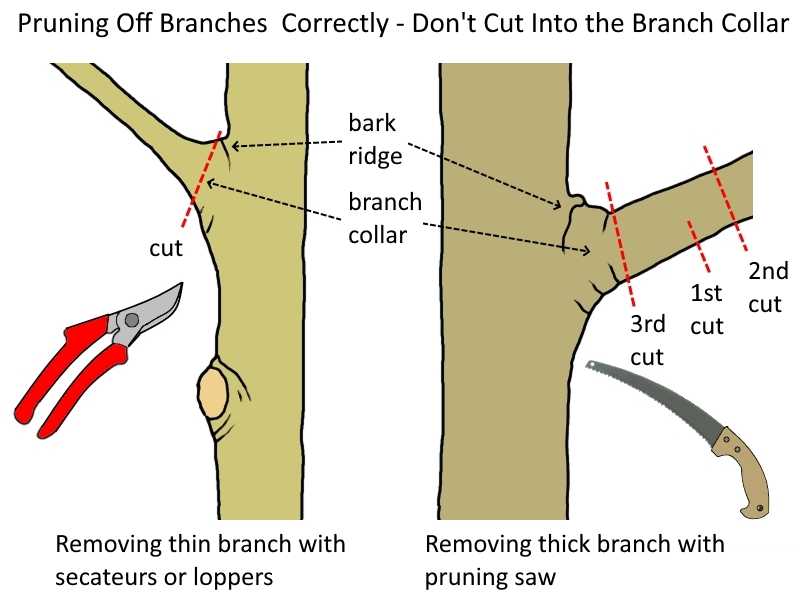
When to Prune Mahonia?
The best time for pruning Mahonia is in spring before the growth of new plants. This is because it ensures that the plant will have plenty of time to recover from pruning before the beginning of its active growth phase. Also, pruning mahonia in its dormant or resting period will allow you to see the structure of the plant more clearly, making it easy for you to mark the removal of the specific branch. Mahonia shrubs are mostly clustered and densely textured with eye-catching flowers. Other than the most ornamental feature of this plant, it is easy to grow and gives a tropical look to the garden. Furthermore, this shrub has floral and fragrant golden-yellow flowers in late winter or early spring, which attracts pollinators like bees and butterflies. However, Mahonias do not demand the need for pruning. But light pruning every year helps encourage healthy foliage growth. Also, it gives a tidy look to the plant.
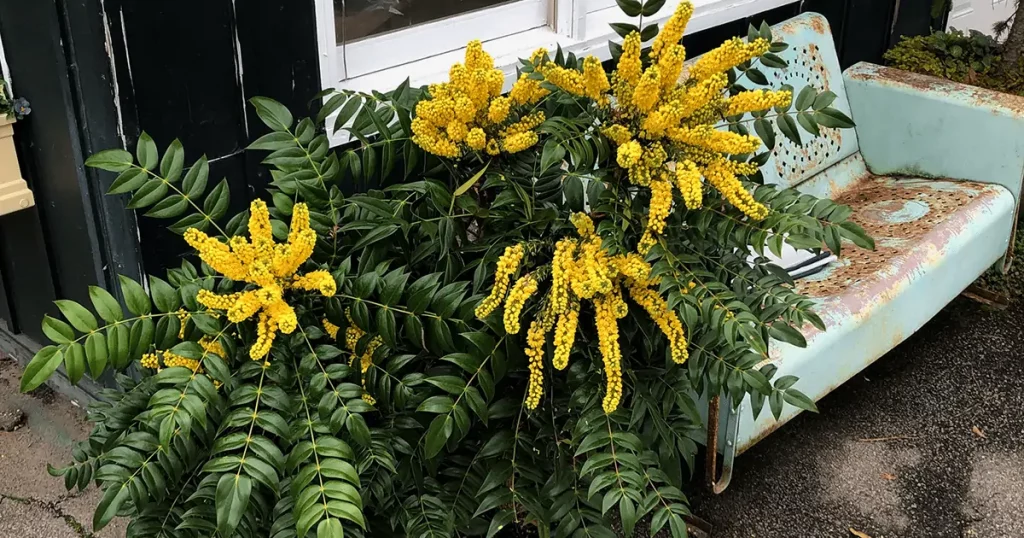
Another best time to prune Mahonia is immediately after flowering. This winter-flowing plant sets its buds for another year and blooms soon after flowering. If you prune Mahonia later in the year, you risk removing the buds that are future flowering for the upcoming year. Before pruning mahonia, keep in mind to wear gardening gloves. Also, sterilise your ‘secateurs’ or ‘pruning shears’ blades. Just dilute the rubbing alcohol or hand sanitiser for sterilisation.
How to Care for Mahonia?
This is a complete guide to pruning Mahonia, but before you remove unwanted parts, you must know how to grow or take care of the plant. However, these are slow-growing, low-maintenance shrubs. But they do prefer enough space to grow. Further growing this ornamental plant, you need to keep a few elements in mind.
1. Light
Mahonia is an all-rounder as it can tolerate sunny weather and heavy shade, but it does have its preference. This plant thrives in partial shade and grows exceptionally well. However, in deep shade, some species can have leggy growth. Thus, it is required to plant the shrub in a perfect location for adequate sunlight and shade to the plant.
2. Soil
In this case, the mahonias are pretty decent as they do not have any particular type of soil to grow in. However, they do well in sandy, loamy, and clay types of soils with various pH levels. Further, if these soils are not available, all you need to keep in mind is that the soil should be moist and well-drained.
3. Temperature
Mahonias are very strong and bearable plants as they can tolerate a wide range of temperatures. However, it is hard for them to handle freezing winds as it burns the foliage of the plant. Mahonias are able to handle temperatures up to 5 degrees Fahrenheit. There is also a step to protect it from extreme temperatures, mulching in the fall around the shrubs in order to protect its roots.
4. Water
Mahonia has a slow growth and does not require much attention. However, they do best when watered regularly while planting, especially during the first year. Moreover, it would be best if you kept in mind to avoid waterlogging. Mahonias are known for their ability to survive in drought conditions, as they only require water in sweltering conditions.
5. Fertiliser
The growth in Mahonia plants does not require external supplements. Once a year, spring feeding with a low-nitrogen fertiliser or a rich layer of mulch brings wonders to the plant. Also, you can consider composting with fish and bone meal to add to the plant.
Types of Mahonia
In this complete guide to pruning Mahonia, you will get to know everything about Mahonia. There are around 70 species in the Mahonia genus, with more hybrids and cultivars. Here we have discussed some common types which are readily available varieties.
1. Mahonia Aquifolium ‘apollo’
This is sometimes called Berberis aquifolium. They are small and bushy, with clusters of bright yellow flowers with blue-black berries that grow and spread up to 1m x 1.5m.
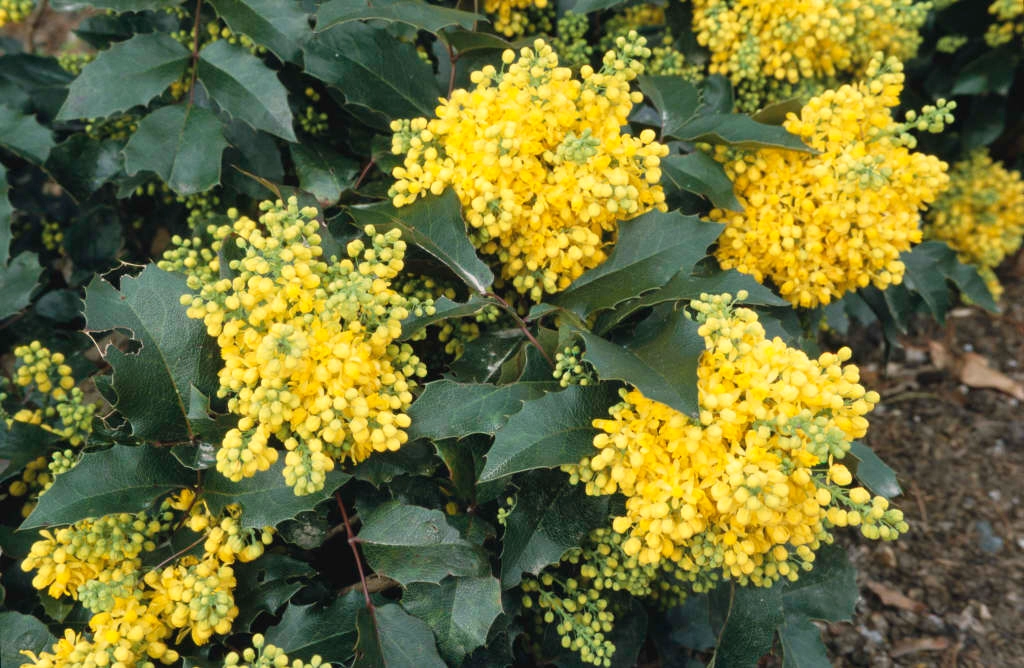
2. Mahonia Eurybracteata’ Soft Caress’
This type of Mahonia is good to grow in pots or large containers. Soft Caress have smaller types with slender foliage. Also, this species flowers from August to October. It has a height of 1m and spreads up to 1m.
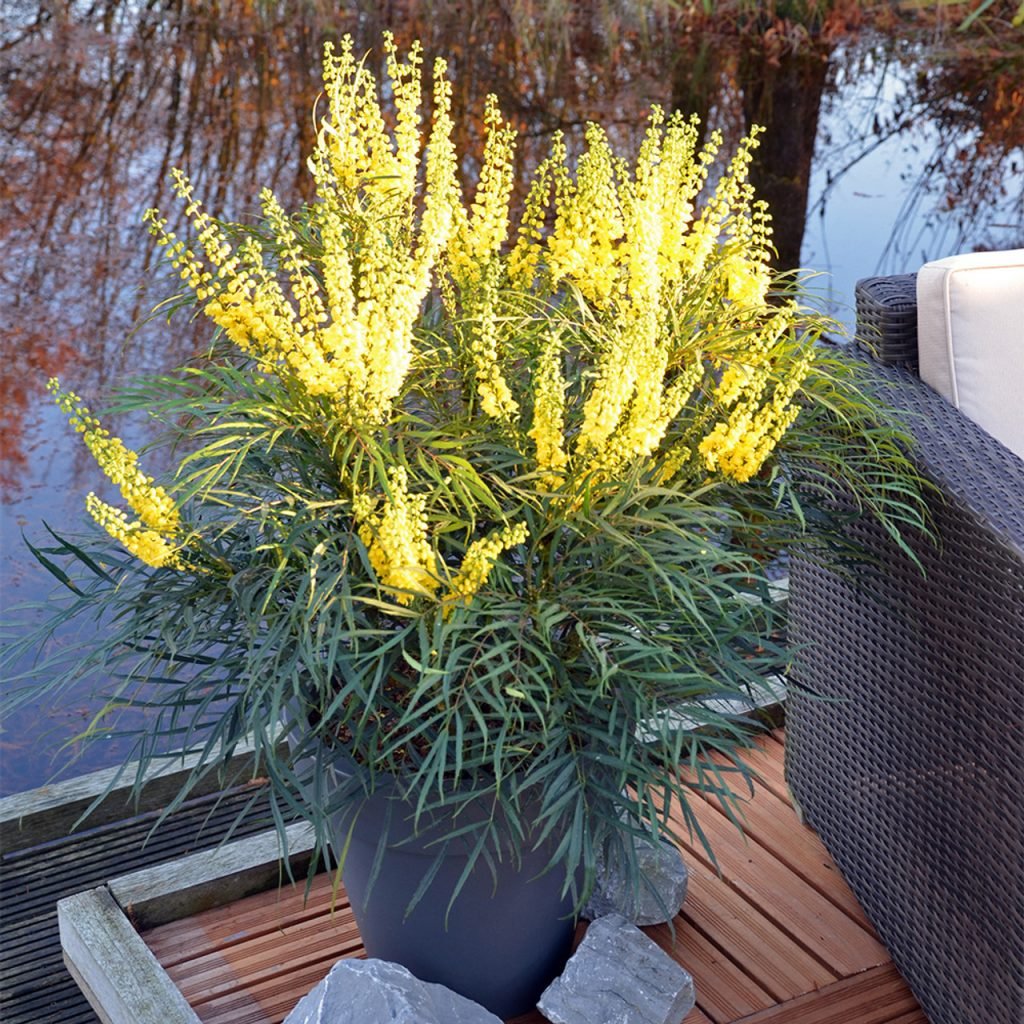
3. Mahonia X Media’ Charity’
This is a hybrid variety of Mahonia that is tall, tough, and very adaptive, as it can reach up to a height of 3m and can spread up to 3m. Because of its tall and tough personality, it is mostly used to create natural privacy around any area.
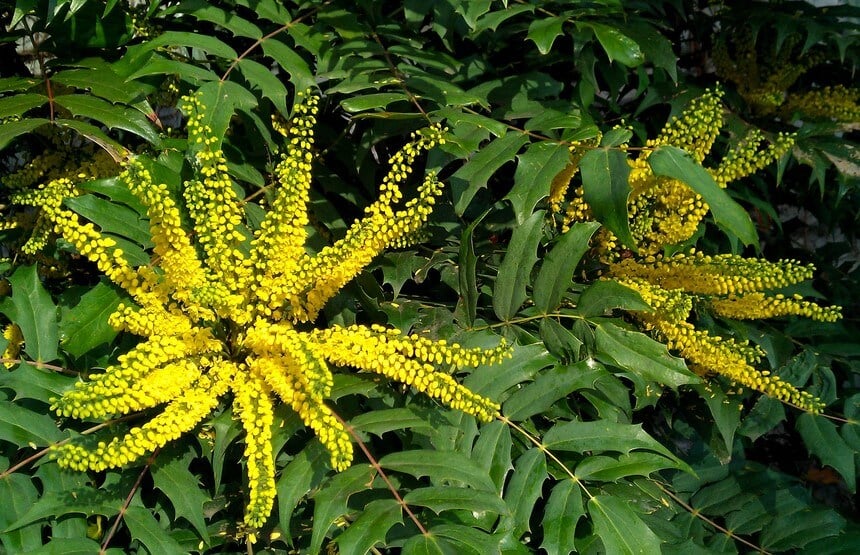
4. Mahonia X Media ‘lionel Fortescue’
This variety of Mahonia is small and has leaflets that are neatly angled at the end. Furthermore, the flowers are in a ring shape with upright spikes. These are also tall as they grow up to 3m long and can spread up to 3m wide.

5. Mahonia X Media’ Winter Sun’
This variety has a flowering regime in November that lasts up to March. Furthermore, it is called the winter sun because of its bright colour and tightly packed flower spikes that are held vertically, making a shape resembling a sun. It grows up to 3m long and has a width of 2m.
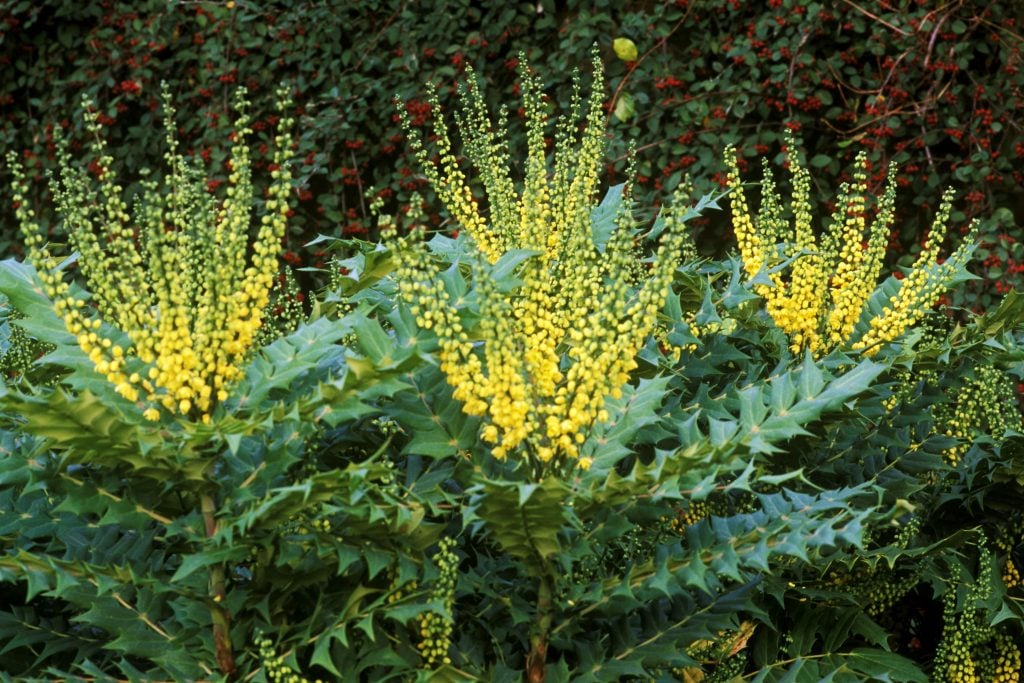
How to Prune Mahonia?
Pruning Mahonia is not a very difficult task, but you need to keep a few things in mind. This is because it requires some knowledge to identify which part to restore and which part to remove. Thus, whichever branches are dead or have some disease should be pruned at their attachments. Also, it is easy to prune awkwardly growing branches which are hindering the growth of other plants. In this complete guide to pruning Mahonia, we have mentioned some common methods of pruning the shrub for better growth.
1. Open Form
The taller and stronger variety of Mahonia can be pruned for open form. After the first 2-3 seasons, you can remove the competing main stems and leaders.
Before that, you need to select the branches that are young, well-spaced, and growing at a desirable angle that is in the middle of 40-60 degrees. Further, you need to prune ⅓ space away from the attachment of the young branches.
In some cases, when two branches that are close have similar features, then you need to let go of one of the young and vigorous ones. It is often advised to mark with watercolour to identify the parts before pruning mahonia.
2. Pruning for Bushiness
In case your shrub has become leggy and long, then it is necessary to prune it if you want to make it bushier. You can also prune any normal specimen to make it bushier. Firstly prune the main stem and canes to whatever height you desire to end the vertical growth of the shrub. Secondly, prune up to ⅓ of the lowermost and longest cane. Also, you can choose to cut some longer branches in half to their length to make them more concise. Try to make a cut above a node.
3. Pruning for Shape
Mahonia looks presentable after shaping, even though it is not required to do so. You can prune Mahonia into a simple oval shape to make it look more compact.
You can leave it for 2-3 seasons and then prune it after it gets a little bushier. If you want to give it a shape, then visualise the desired shape and then shape it. The best is to cut above a node and not to cut more than ⅓ of the shrub as it will hinder the growth of the plant.
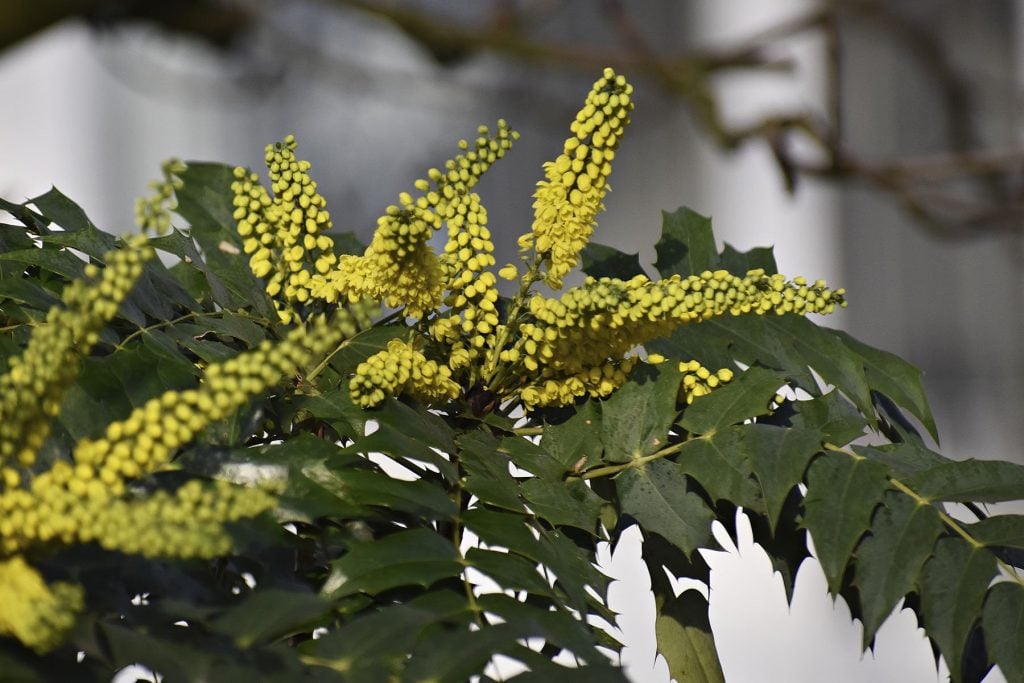
Is Pruning Mahonia Necessary?
Even though it is not necessary to prune Mahonia as per some gardeners but they also believe that to have better growth, pruning is necessary. Furthermore, your job is not over once you remove all the dead and unwanted parts. After all the pruning is done, it is always considered best to feed them properly. This is because plants need more energy to regrow all the parts that have been removed.
A balanced organic fertiliser or slow-release granules will help boost the growth of the plants. However, you need to place it into the soil from a distance from the crown. Moreover, another fertilisation method is mentioned above in this complete guide to pruning Mahonia.
Follow all the steps properly to have a happy and healthy plant in your garden.

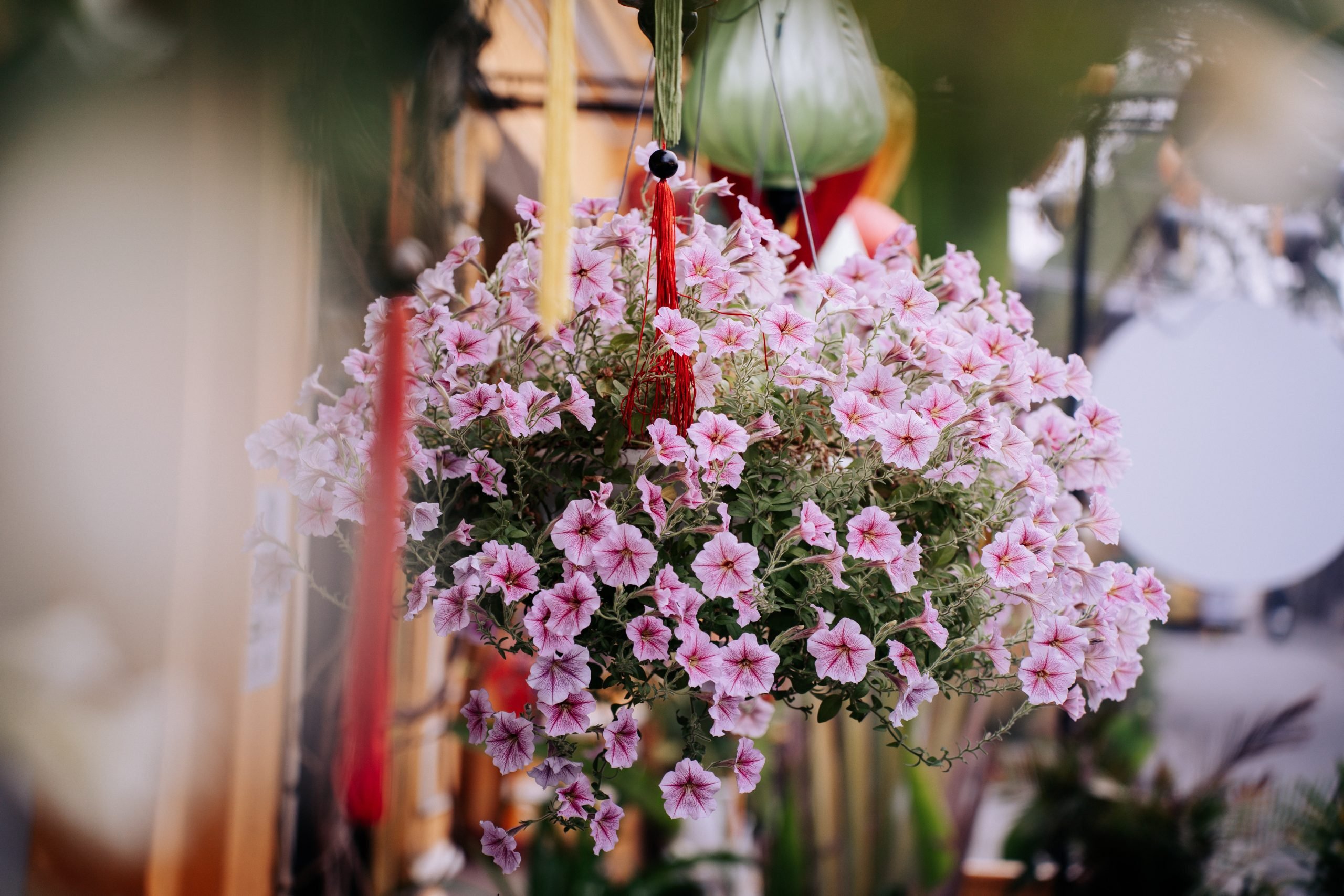
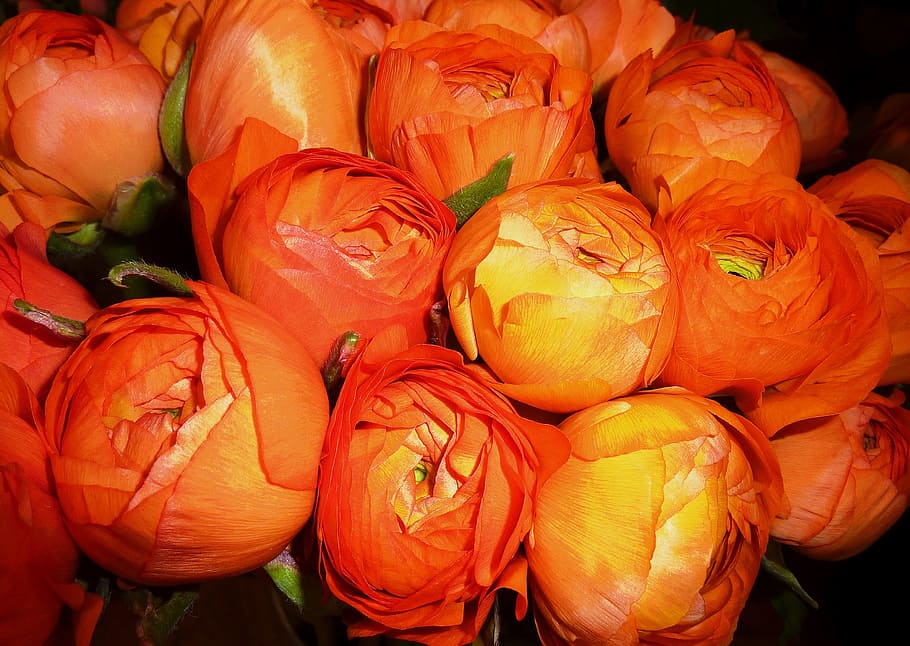
![How To Feed Your Apple Trees With Nutrients [Fertilisation Guide]](https://staging.thearches.co.uk/wp-content/uploads/Looking-for-ways-to-fertilise-your-apple-trees-Check-out-our-key-guidelines-and-learn-how-to-enhance-fruit-yield-and-maintain-the-trees-health.jpg)
